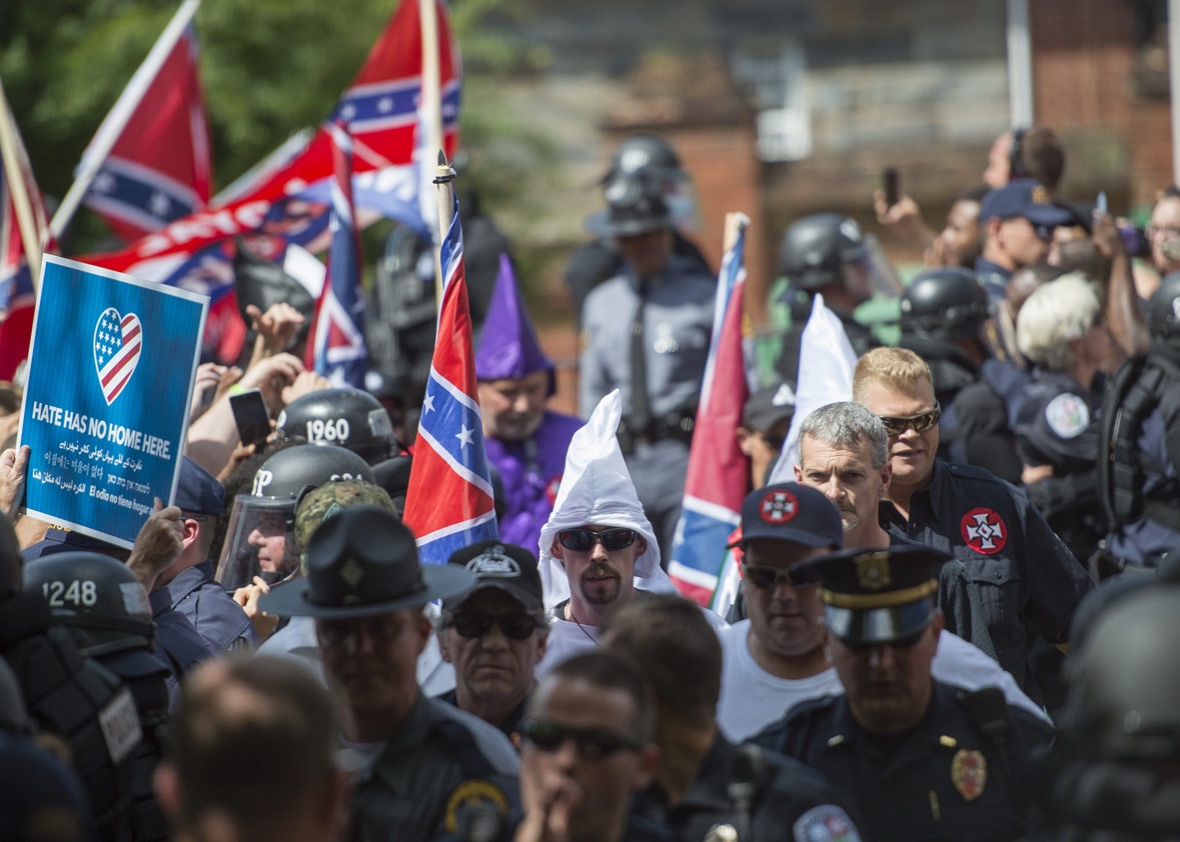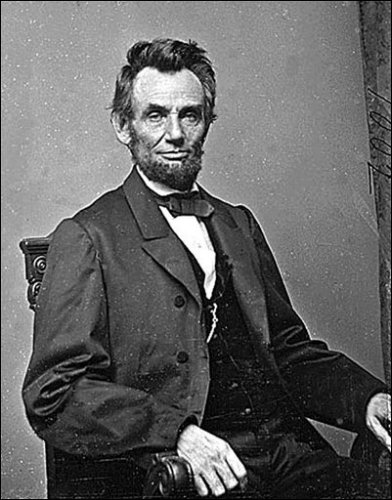As a historian, over the last couple of years, I have read numerous scholarly books and articles on the last two decades of the Antebellum and subsequent US Civil War. It soon dawned on me that at night I was watching news that mirrored what I was reading in the morning and afternoon.
Astonished by the historical parallels between the Antebellum and domestic developments since 2008, I began writing a series of comparative essays. This is part 1.
The historical discipline depends on a continuous conversation between past and present, a dialogue – not a monologue – between historians and those about whom we write.
Playing with the ambiguity of the word “contemporary,” Italian philosopher of history Benedetto Croce once wrote that all history is contemporary history, meaning that the weight of present-day needs and circumstances inescapably shapes the way we look at the past, no matter how remote.
Read The New York Times or Washington Post or turn on CNN or MSNBC any given day and you will read and see eerie echoes of most of the factors that led to the Civil War 155 years ago.
The parallels are manifold, among them profound political and partisan polarization, the passing or marginalization of political compromisers, a rise in political extremism, the public’s loss of confidence in government institutions including the presidency, Congress, and Supreme Court, intensified nationalism, and escalating political vitriol and racial violence.
Resurgence of Southern Nationalism
The past decade or so has witnessed a resurgence of southern nationalism, a widespread revival of Confederate symbols such as the Confederacy flag, and a growing adoration of Confederate leaders.
This is partly a response to successful efforts to remove Confederate flags from public buildings, knock Confederate Generals like Thomas ‘Stonewall’ Jackson down from their bronze horses, and uproot generic statues of Confederate foot soldiers as was the case in Durham, North Carolina in the summer of 2017.
Weeks later, to protest plans to bring down the statue of Confederate General Robert E. Lee, militants belonging to various extreme right and white supremacist organizations – including neo-Nazis, neo-Confederates, and members of the KKK – congregated for the Unite the Right rally in Charlottesville, Virginia. The city, the nation, and the world witnessed footage and images of violent and ultimately deadly confrontations between hate groups and counter-protesters.

Racial, social, and political tensions have exploded into mass mobilizations of antiracist protesters, riots, and quasi-military responses from various police departments and National Guard units since the public execution of African-American George Floyd by white Minneapolis police officers on May 25.
Since then, Black Lives Matter protesters have toppled numerous confederate statues and commemorative plaques in Virginia, Alabama, Florida, Kentucky, Georgia, North and South Carolina, and Tennessee, among them one honoring Confederate President Jefferson Davis in Richmond on June 10.
Photographs of the toppled bronze Davis, show him on his back, his head smashed and bloodied with paint, and his right arm extended upwards as if begging to be lifted. On the same night, demonstrators lynched the statues of four generic Confederate soldiers in Portsmouth, VA.
In other instances, state and city authorities are pre-emptively removing such statues. Earlier this week, the City of Charleston brought down John C. Calhoun’s; and Virginia’s governor has promised to remove Lee’s Richmond equestrian monument.
On June 10, The Lincoln Project, a Republican super PAC that opposes Donald Trump, derided him for his public defense of Confederate symbols, asserting that he “is more interested in acting like the President of the Confederacy, than as the President of all Americans.” More recently, dauphin and political humorist Donald Trump, Jr. suggested that fallen Confederate monuments be replaced with statues of his father’s likeness.
Want to save our monuments?
Let’s get a movement going to replace any statue torn down during these riots with a new and more sturdy statue of @realDonaldTrump.
The nonsense would stop instantly.
— Donald Trump Jr. (@DonaldJTrumpJr) June 23, 2020
Few people know that the vast majority of Confederate statues that are coming down do not date to the Civil War or the decades that followed. In fact, most were erected during the Jim Crow Era (1890s-1950s).
What about the aphorism that victors always write history? Not in this case, where the South lost the war yet won the interpretation of that war.
US Civil War
Historians recognize that the main cause of the Civil War was slavery (essentially a race matter), and more specifically the institution’s expansion into new territories and states.
While slavery was the Antebellum Era’s most divisive sociopolitical issue, it was braided into a thicker noose of contentions that included a balance between slave and free states (concomitantly, political balance in Congress); states’ rights versus strong federal authority; low tariffs versus protectionism; and commercial or territorial expansionism.
Among the multitude of other causes was the passing (or marginalization) of a generation of compromisers in Congress the likes of Henry Clay and Daniel Webster (Whig Party leaders who both died in 1852), Democratic Senator William R. King of Alabama (who died in 1853), and Democratic Senator from Illinois Stephen A. Douglas, among others; and the parallel rise of extremists on both sides of every divisive issue: northern anti-slavery radicals such as William Seward, Salmon P. Chase, and Thaddeus Stevens, and fire-eating pro-slavery secessionists the likes of John Quitman, John C. Breckinridge, and Jefferson Davis.
Other contributing factors included polarization between political parties, escalation of nationalist sentiments (unionism in the North and nationalist secessionism in the South), increased bitter rhetoric and political violence as in the case of guerrilla warfare in Bleeding Kansas, John Brown’s raid of Harpers Ferry, and even inside the walls of the Capitol building and duel ranges in the nation’s capital.
Even bloodier and more vicious was the violence perpetrated against southern free and enslaved blacks, manifested through increased and harsher physical punishments, new repressive legislation, anti-black riots, and illegal re-enslavement, as exemplified in the diary of Solomon Northup in Twelve Years a Slave.
In some Northern cities, meanwhile, Irish and German working-class immigrants feared that emancipation would result in fewer work opportunities and lower salaries and, on occasion, unleashed violent rhetoric and attacks against blacks. The infamous New York City anti-draft racial riots of 1863 were the period’s bloodiest manifestations of immigrant violence against blacks. When all was said and done, around 120 individuals, most of them black, lay dead.
Irish and German Catholic immigrants themselves had been the targets of ethnic hatred nationwide, sentiments that led to the formation of Know-Nothing organizations and the founding of the nativist, anti-Catholic American Party in 1855.
Erosion of Faith in Political Institutions
As is presently the case, the years leading to the Civil War also saw an erosion of faith in political institutions, the national electoral system and Congress among many southerners, and the Supreme Court in the eyes of some northerners.
The composition of Congress and the Senate were intimately tied to the number of free states and slave states. Whereas in 1837 there was a balance of 13 free states and 13 slave states, by 1858 the ratio was 17 to 15 in favor of the North’s and Far West’s free states but that year, Republicans failed to elect a single congressman in any of the slave states.
Those electoral shifts largely responded to demographic changes, including faster westward expansion north of the Mason-Dixon line and disproportionate growth of the electorate of the North. For an increasing number of Democrats, representative democracy seemed to no longer work in their favor.
Meanwhile, in the Supreme Court, Democrats enjoyed a 7 to 2 majority that overlapped with a southern majority of 6 to 3. Southern Democratic dominance became disturbingly evident to many northerners and Republicans when the court reached the Dred Scott decision in 1857 which could potentially expand the number of slave states and declared that blacks were inferior and therefore not deserving of US citizenship nor the protections inherent to that status. In 2017, Maryland authorities removed a statue of then Chief Justice Roger Brooke Taney from the State House in Annapolis.
If southern voters saw the federal legislative system as an obstacle to their sectional interests, their northern counterparts viewed the Supreme Court as incapable of protecting theirs.
1860 Elections
Illinois Republican candidate Abraham Lincoln was elected president in 1860, but he won by a margin of only one electoral vote, with less than 40 percent of the popular vote, and without getting a single ballot in 10 southern states.

Just three days after the elections, on November 9, the South Carolina General Assembly declared Lincoln’s election a “hostile act,” seceded from the Union in December and was joined by 10 other southern states in 1860 and 1861.
The Civil War interrupted the expansion of slavery and led to its abolition but did not end the North-South divide and short of reducing discrimination, exploitation, and violence against blacks, resulted in a failed Reconstruction and long decades of exploitative sharecropping arrangements, Jim Crow, segregation, disenfranchisement, and lynching.
In the past month, the unending dialogue between past and present has become increasingly loud, a shouting match that reminds us that all history is contemporary history.
Disclaimer: The views and opinions expressed here are those of the author and do not necessarily reflect the editorial position of The Globe Post.






















